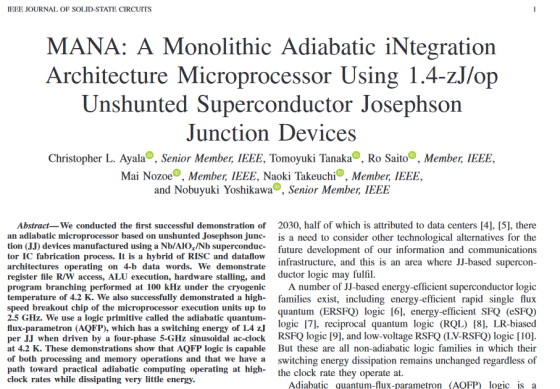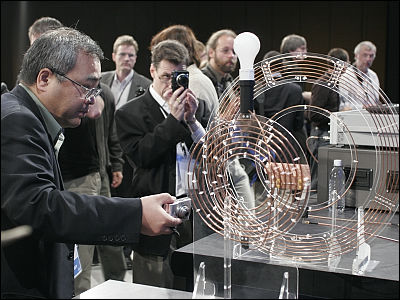A Japanese research group develops a superconducting microprocessor that is 80 times more efficient than conventional CPUs

The performance of microprocessors such as
Superconducting Microprocessors? Turns Out They're Ultra-Efficient --IEEE Spectrum
https://spectrum.ieee.org/tech-talk/computing/hardware/new-superconductor-microprocessor-yields-a-substantial-boost-in-efficiency
MANA: A Monolithic Adiabatic iNtegration Architecture Microprocessor Using 1.4-zJ / op Unshunted Superconductor Josephson Junction Devices
(PDF file) https://ieeexplore.ieee.org/stamp/stamp.jsp?tp = & arnumber=9295318

According to Christopher Ayala, an associate professor at the Institute of Advanced Sciences, Yokohama National University, who is a member of the research team, the operating frequency of general superconductor devices is several hundred GHz, while MANA is up to about 10 GHz. It will work. In this research, MANA operated at 2.5GHz, which is equivalent to a general CPU, but as the design method and experimental method improve, it will be able to operate at 5-10GHz.
Since MANA is designed using superconductors, it will not operate unless it is cooled to 4.2K (about minus 269 ° C). The research team succeeded in operating MANA by attaching MANA to the tip of a custom-made cable and connecting it to a liquid helium cylinder as shown in the image below.

As mentioned above, in order for MANA to operate, it is necessary to maintain a very low temperature of about minus 269 ° C, but even if the energy required for cooling is taken into account, it is compared with the 7nm processor currently on the market. It operates 80 times more energy efficiently, Ayala said.
In addition, IEEE Spectrum, the journal of the Institute of Electrical and Electronics Engineers (IEEE) , points out that MANA requires a cooling system with liquid helium, so it is suitable for large-scale computing environments such as data centers and supercomputers. doing.
Mr. Ayala said, 'There are still many areas in MANA that have room for improvement, such as clock networks and latency, and our research team is continuing research to improve these areas,' he said. He talked about his motivation.
Related Posts:






